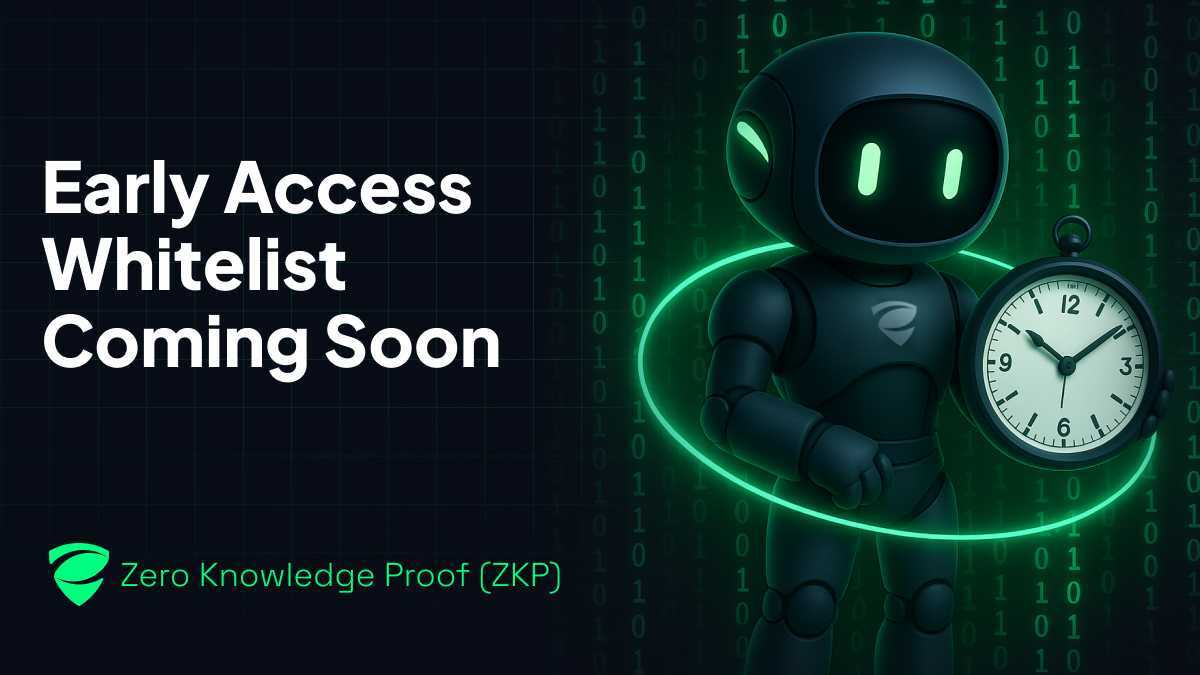In the age of open blockchains and unfiltered content, assertions fly freely, and often recklessly. From speculative price calls to exaggerated technical claims, the crypto ecosystem has long tolerated a volume-first culture. But Zero Knowledge Proof (ZKP), an upcoming blockchain protocol, introduces a radically different model: one where every claim carries a cost, and every falsehood has financial consequences.
This isn’t just another project; it’s a protocol engineered to prioritize facts over noise. With the whitelist phase on the horizon, early users now have the opportunity to shape a blockchain where credibility is currency, and empty statements have no place.
Why Claims Need Cost
Traditional blockchain platforms operate on the principle of openness, allowing anyone to say anything. But with that freedom comes noise, endless unverified claims that crowd out truth and distort perception. Zero Knowledge Proof (ZKP) confronts this challenge directly by introducing a cost-to-speak structure. Under the protocol, users must stake tokens to submit claims.
This simple shift has a profound effect: it forces claimants to think twice before broadcasting. Assertions are no longer free; they are investments. And when your capital is on the line, careless speech becomes risky. This mechanism isn’t a limitation, it’s a filter that favors accuracy.
Falsehoods Aren’t Ignored, They’re Penalized
The Zero Knowledge Proof (ZKP) protocol doesn’t just discourage misinformation, it punishes it. If a claim is challenged and proven false, the claimant’s staked tokens are slashed. This slashing mechanic doesn’t rely on centralized moderators or subjective votes. Instead, it’s enforced through cryptographic logic and protocol-level consensus.
Challengers who successfully identify falsehoods are rewarded, turning the process into a game of intellectual accountability. The result? An ecosystem that actively detects and removes misinformation. Unlike social media platforms where false content can persist indefinitely, Zero Knowledge Proof (ZKP) ensures that lies cost real value, and that truth is financially incentivized to rise.
The End of Speculative Noise
One of the most overlooked problems in crypto is speculative overload, where coins, projects, and influencers flood timelines with bold, unverified statements. Zero Knowledge Proof (ZKP) shifts that culture. With every claim carrying financial weight, users are incentivized to stake only on verifiable facts. Speculators must put their money where their mouths are.
This radically reduces spam, trolling, and meaningless hype. It also builds an auditable track record of participants who consistently get it right. As the whitelist prepares to open, Zero Knowledge Proof (ZKP) invites a new kind of user, not just traders or holders, but thinkers, researchers, and analysts who value a protocol that rewards their accuracy.
Last Say
Zero Knowledge Proof (ZKP) doesn’t ask for your trust, it asks for your proof. By introducing a financial cost to all on-chain assertions, it builds a protocol where every word counts and every lie comes with a price. This isn’t censorship; it’s accountability. With claims, challenges, and slashing baked into the protocol, Zero Knowledge Proof (ZKP) creates a self-correcting system that values integrity over influence.
As the upcoming whitelist nears, the opportunity is clear: early access means becoming part of a new blockchain truth economy. In Zero Knowledge Proof (ZKP) world, the loudest voice doesn’t win, only the most accurate one does.
Disclaimer: This media platform provides the content of this article on an "as-is" basis, without any warranties or representations of any kind, express or implied. We assume no responsibility for any inaccuracies, errors, or omissions. We do not assume any responsibility or liability for the accuracy, content, images, videos, licenses, completeness, legality, or reliability of the information presented herein. Any concerns, complaints, or copyright issues related to this article should be directed to the content provider mentioned above.







